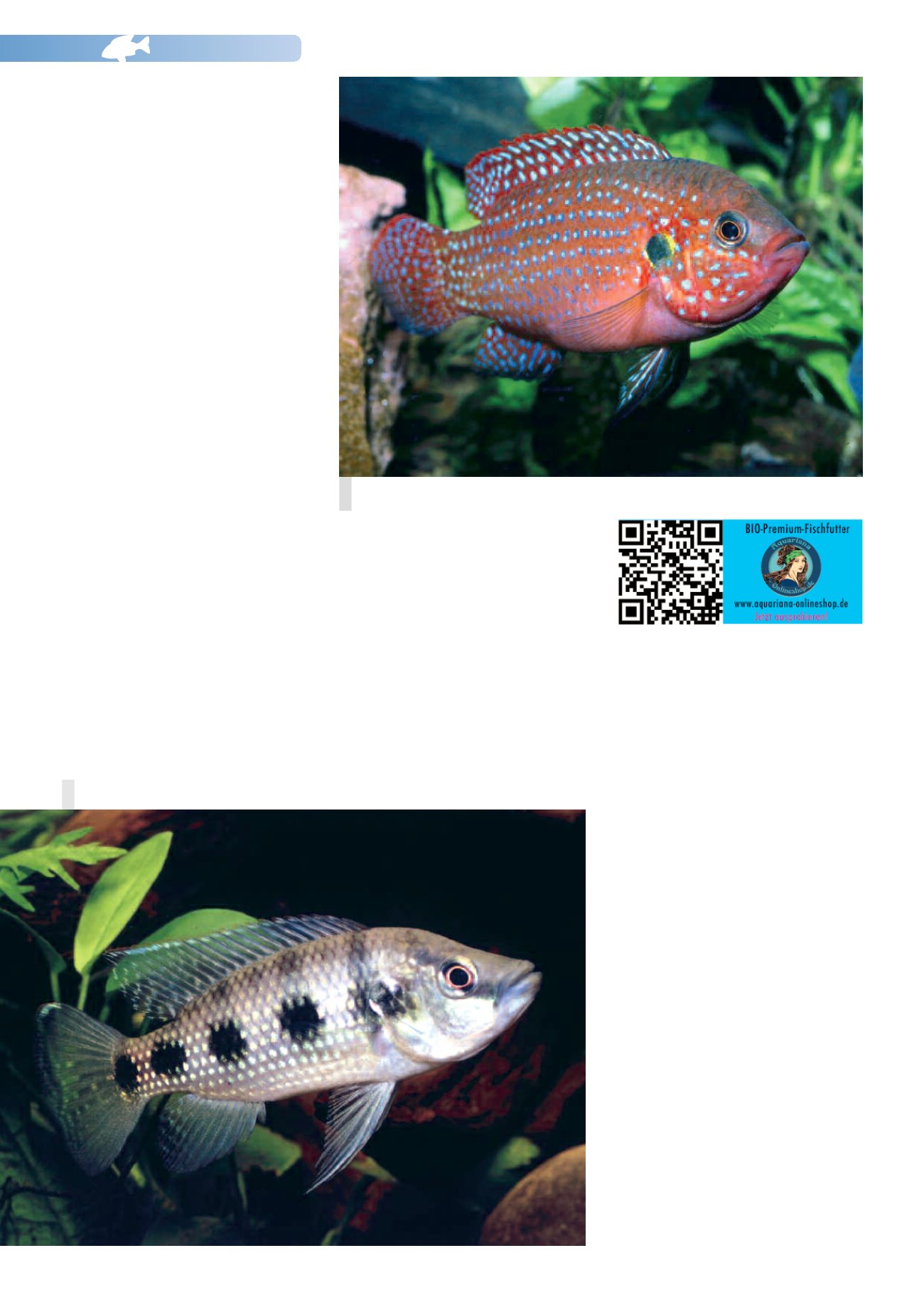
NEWS 110
4
Aquarium Glaser in the form of captive-bred
specimens, and nothing could be learned of
their provenance. Naturally, in my role as
resident zoologist I was asked to identify the
species, but had to pass: quite simply the
combination of characters doesn't concur
with any species of
Hemichromis
known to
date! The body shape and distribution of the
iridescent blue spots (the so-called
iridophores) most closely matches the
species
Hemichromis guttatus
, but that
species always has a readily visible, elongate-
oval spot on the center of the body. And no
lateral spot of any kind is apparent In the "Fire
Lips" (there are around25 specimens).Be that
as it may, the fishes looked so attractive even
in the photographic aquarium that I decided
to take a pair homewithme inorder tobreed
them and see what the offspring turned out
like.
Hemichromis guttatus
This small red jewel cichlid - males grow to
about 10 cm long,females remain smaller - is
undoubtedly themost widespread species of
the genus in the hobby. And the majority of
the so-called "lifalili" cultivated forms were
followed by many authors, for example L
INKE
& S
TAECK
(2002) and L
AMBOJ
(2004).
Nevertheless a number of misapprehensions
obstinately persisted, for example the idea
that a (rather aggressive) cultivated form of
red jewel that didn't exist at all in thewild,was
being mis-labeled as
Hemichromis lifalili.
The
"true"
H. lifalili
, by contrast, was hardly ever
maintained in the aquariumand kept only by
a few specialists.
Hemichromis
sp."Fire Lips"
This background information is required in
order to understand why determining the
specific identity of red jewel cichlids is so
tricky. But is that really so important? Do you
need to know what an animal is called in
order to get enjoyment from it? Of course
not. But even so the question of specific
identity isn't unimportant, as unfortunately
increasingly more species of animals are
disappearing forever fromour planetwithout
our ever registering their existence at all.
Given thatMan is responsible for themajority
of these extinctions of animal and plant
species, because he - often without realizing
it! - alters their environment to such a degree
that the animals and plants can no longer
exist there, humanity has a responsibility to
record the diversity of the life forms found on
Earth. We can only protect what we know
about! The aquarium hobby is the most
important aid to science when it comes to
achieving this task in the realm of the small
fishes. Apropos of which, it cannot be
repeated
often
enough
that
the
maintenance and breeding of wild-caught
fishes in the aquarium is active species
conservation! No species has ever become
extinct as a result.
Hemichromis
sp. "Fire Lips" arrived at
This cultivated form or hybrid of
Hemichromis guttatus
is usually incorrectly labeled as
H. lifalili
.
Hemichromis elongatus,
an example of the green jewel cichlids.


